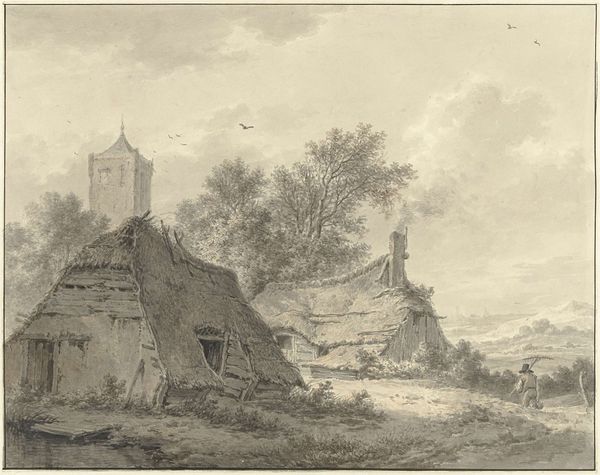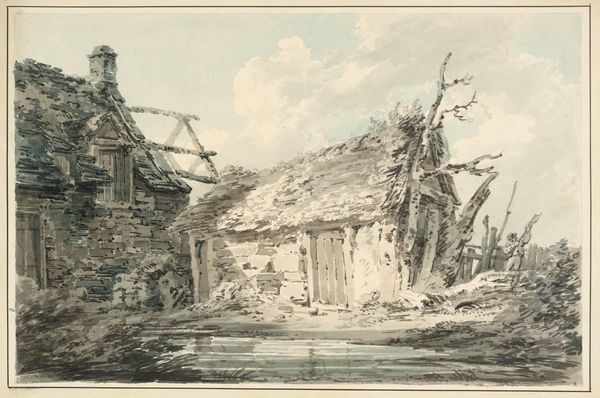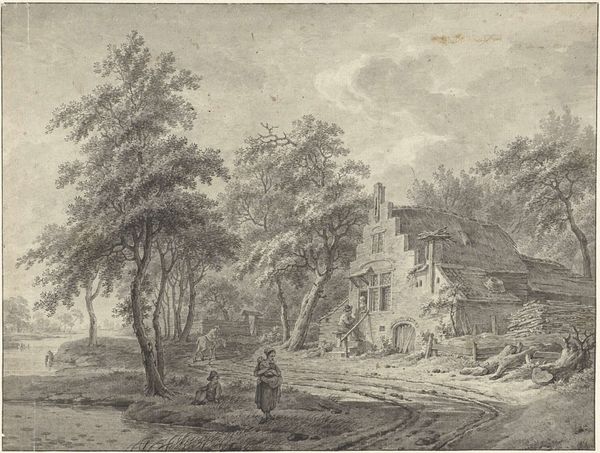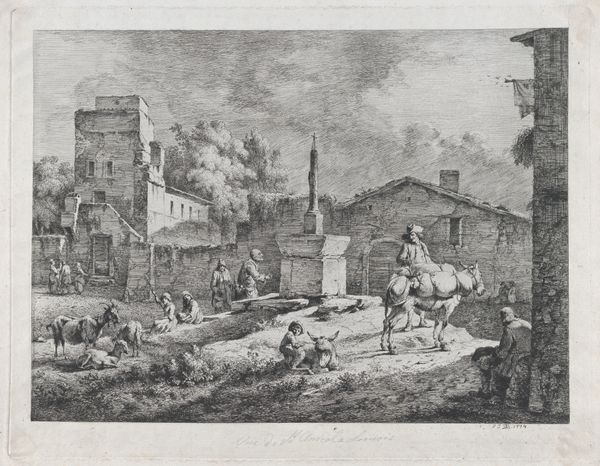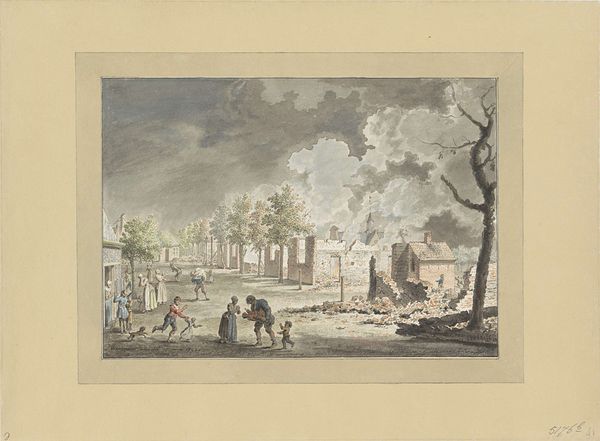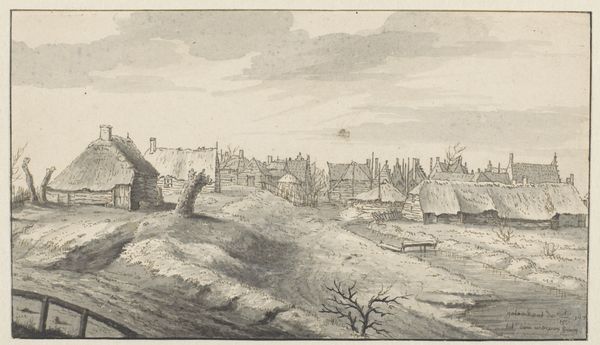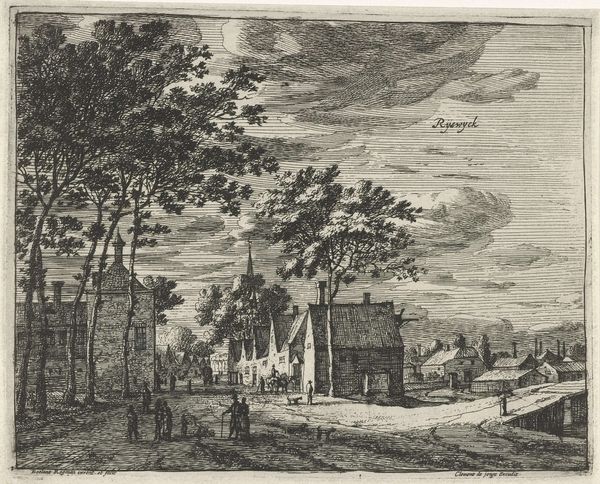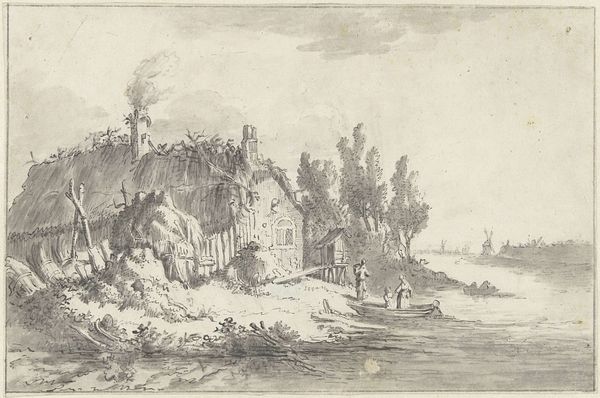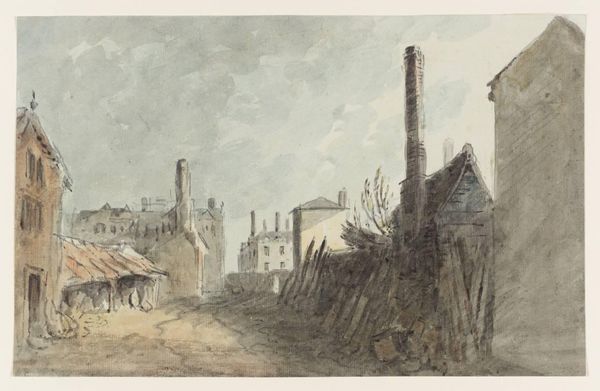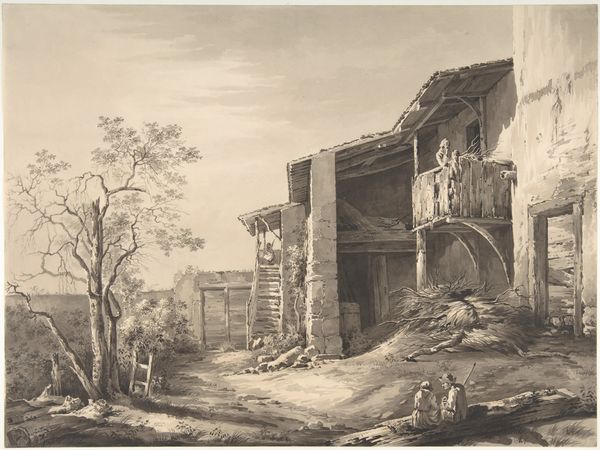
Gezicht op het Rapenburg te Leiden na de Buskruitramp van 12 januari 1807 1807
0:00
0:00
drawing, ink
#
drawing
#
neoclacissism
#
narrative-art
#
landscape
#
ink
#
cityscape
#
history-painting
#
realism
Dimensions: height 327 mm, width 421 mm
Copyright: Rijks Museum: Open Domain
Curator: Look at this ink and pencil drawing. It's titled "Gezicht op het Rapenburg te Leiden na de Buskruitramp van 12 januari 1807," depicting a cityscape after a devastating gunpowder explosion, created in the same year by Leendert Overbeek. The monochromatic palette really sets the scene. Editor: The devastation is palpable, isn’t it? You immediately get a sense of the utter chaos. But also a surprising calm in the muted tones and realistic style. It's like a photograph, almost a document of what remains. Curator: Indeed. The artist is working within the framework of Neoclassicism here, while also grounding the work in observed Realism. Consider the labor: think of the process to render this street with ink on paper. Then look at all of those workers clearing debris; Overbeek makes clear reference to the materiality of daily existence. Editor: The image functions as historical record too, you know? The gunpowder disaster became a turning point in Leiden's history; its civic leaders invested significantly to recover. Overbeek is capturing a specific moment of intense trauma, and resilience. He positions ordinary citizens prominently. They become representatives of the larger community, I would say. Curator: Exactly. And while there's clear artistic intention in the linear precision and details, it's ultimately paper and ink depicting brick, wood, bodies – everything reduced to raw matter following trauma. What about the perspective—leading us directly into the destruction, pulling the viewer into the scene of devastation? Editor: It is so carefully constructed to evoke feeling—note the stark contrast of destroyed buildings with the bare trees reaching towards the sky? These touches really give it the character of Romanticism: evoking a strong, individualistic emotional response to tragedy and recovery. And a silent condemnation of power. Curator: It highlights the cyclical process: devastation, rebuilding, and the continuous need for labor that shapes urban life. The material record, in this drawing, reflects our engagement with rebuilding our physical world. Editor: An important work—it reveals so much about not only Leiden, but about trauma and society itself. Thanks for unpacking that with me. Curator: My pleasure. These seemingly simple materials reflect complex, devastating, historical changes. It’s why looking closely at materials and method yields greater awareness of historical narrative.
Comments
No comments
Be the first to comment and join the conversation on the ultimate creative platform.

